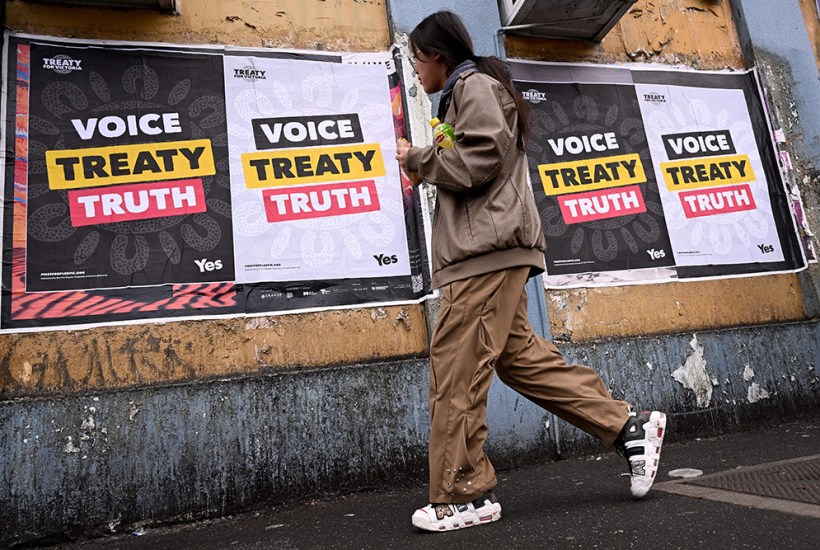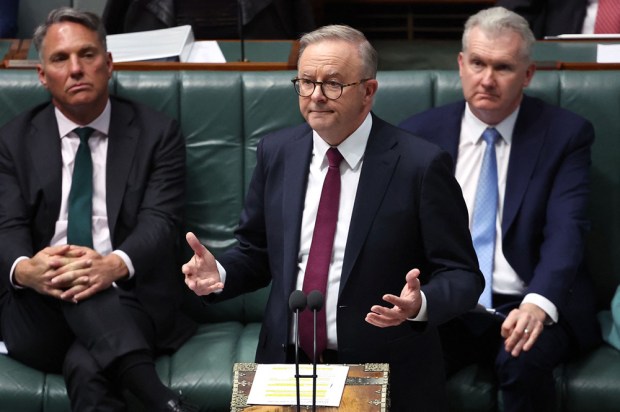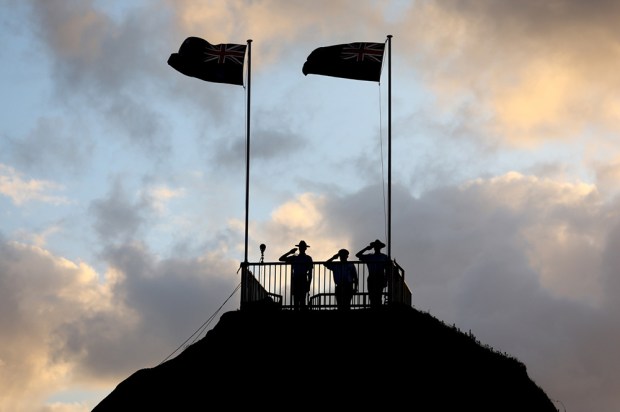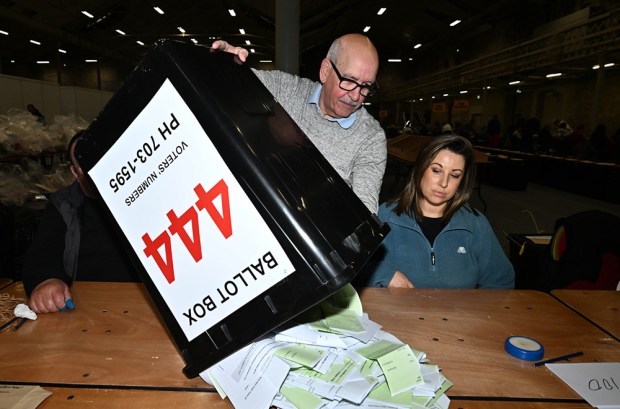The deliberate vagueness of the Voice referendum’s language has fuelled suspicions the government is attempting to sneak through consequential changes because the public cannot be trusted with the full truth. Absent clarity on form, functions, powers and deliverables compared to the existing cluster of institutions, MPs and senators, advocates and funding streams, the referendum is effectively reduced to the question: ‘Do you trust PM Albanese to amend the constitution – Yes or No?’
Judging by his casuistic waltz on the Uluru Statement from the Heart, the duplicity in the question that misleadingly conflates recognition and representation, and the bad-faith tilt in funding, the answer is: No. Albanese has waffled, deflected and mocked perfectly legitimate questions with hyperbolic smears of QAnon conspiracies, showing why he cannot be trusted to do the right thing or get the details right. He has committed on multiple occasions to implement the Uluru Statement in full, which would be nonsensical if it was just a one-page summary of aspirations. On 14 August he made the jaw-dropping admission he hasn’t read beyond the cover page: ‘why would I’? This demonstrates intellectual laziness and prime ministerial delinquency.
Megan Davis argued in the Australian last year the Uluru Statement, ‘occasionally mistaken as merely a one-page document… in totality… includes several pages of the legal reasoning for a constitutional voice and also a lengthy narrative called Our Story’. After the PM’s about-turn, in the best traditions of Yes, Minister she clarified that attempts to dredge up past statements and transcripts were ‘farcical’. Peta Credlin took apart the Albanese and Davis arguments in a forensic analysis, referencing multiple past statements that they now wish to airbrush from history. The Uluru Statement was released by the National Indigenous Australians Agency (NIAA) as Document 14. Senator Jacinta Price’s office received verbal clarification from them that the statement is 26 pages long. The first page has just 439 words. The 9,500 words in the next 25 pages, including 177 footnotes plus three ‘roadmap’ charts, are unquestionably part of and underpin the Uluru Statement. Should the referendum pass, activists and judges will be fully justified in drawing on Document 14 in full in voicing and adjudicating demands.
Over five decades as a student and professor, I have read and written hundreds of books and thousands of book chapters and journal articles. Document 14 begins on page 87 with the title ‘Uluru Statement from the Heart’ (in all caps), and ends on page 112. Section headings, (also in all caps), include Our Story, Guiding Principles, Reform Priorities, and Roadmap. Sub-section headings, (in title caps), include items like The Law, Invasion, Resistance, Mourning, Activism, Land Rights, Makarrata, Voice to Parliament and Treaty. The document is permeated by anger, grievance, entitlement and demands for atonement, for Australia’s history since 1788 and is full of ‘massacres, disease and poison,’ including the ‘Tasmanian Genocide,’ that ‘decimated’ Aboriginal peoples.
These are empirical facts. Whether they amount to one coherent package is a matter of judgment. In my professional judgment it constitutes one integrated document. Prominent Voice advocates George Williams and Megan Davis hold the Voice ‘is a change to the structure of Australia’s public institutions’ that ‘would redistribute public power via the constitution’ such as to ‘compel the state to listen to Aboriginal and Torres Strait Islander peoples in policy and decision-making’. The pages following the first give content and language to what form the demands will take.
The 26-page statement is real. It exists and is now in the public realm. ABC’s Leigh Sales compares the misinformation of the alleged ‘secret 26-page document’ to the 2016 Mediscare campaign. ABC Media Watch host Paul Barry more accurately labels it ‘disputed’, not ‘false’. Chris Kenny lists the 26-pages claim as one of eight myths of the No campaign. The Sales/Kenny dogmatic assertions in the face of clear and compelling empirical evidence to the contrary can only dent their credibility on other issues.
There’s little evidence in the document of grace, generosity of spirit or interest in dialogue and reconciliation. The zeitgeist encourages the demonisation of everything European and the romanticisation of non-Western cultures and history. You can praise any culture in the world except Western but must blame only Western culture for all the world’s ills. In truth the one-sided history of shame presented in the Uluru Statement bears no relation to the many accomplishments and social, gender and racial progress that have made Australia a vibrant multicultural community. It is not perfect, by any means, but attractive enough that, if given the choice, very large numbers of non-Caucasians would flock to it as a land of equal opportunity and citizenship.
Saul Alinksy’s thirteenth and final Rules for Radicals (1971) for taking power away from the elites advises: ‘Pick the target, freeze it, personalise it, and polarise it’. Cut off the support network and isolate the target from sympathy. Go after people and not institutions; people hurt faster than institutions. The 31-page ‘Yes23 Persuasive Conversations’ cheat sheet for Yes campaigners follows this playbook in advising campaigners to name a ‘villain’ such as mining billionaires who ‘care more about profit than protecting our country’. In other words, to deploy only too familiar tropes that demonise capitalism and successful entrepreneurs. If the questions are too difficult – for example details on structure, composition and powers – they are told to ‘redirect’.
There is a brewing backlash against the heavy deployment of the combined institutional power of government, corporations, media, sporting bodies and universities ganging up against the ‘deplorables’, a top- down effort to bribe and bully a racially divisive change to Australia’s foundational governance construct and civic identity. The Australian Electoral Commission has added to the disquiet over double standards and stacked process and funding imbalance. It has accepted two ways to vote Yes: with a Yes or a tick – but only one to vote No, with a cross being invalid. The AEC should look to the US to see what happens when almost half the population stops believing in the legitimacy of the process and outcome of voting. We should also learn from the US what happens when identity politics overrides everything else. It’s tearing American society apart, deepening division and conflict. The Voice is already doing the same here. Constitutionalising it will entrench the victimhood and grievance narrative as a permanent feature of Australian society and politics.
To believe otherwise is the triumph of hope over experience.
Got something to add? Join the discussion and comment below.
Get 10 issues for just $10
Subscribe to The Spectator Australia today for the next 10 magazine issues, plus full online access, for just $10.
You might disagree with half of it, but you’ll enjoy reading all of it. Try your first month for free, then just $2 a week for the remainder of your first year.














Comments
Don't miss out
Join the conversation with other Spectator Australia readers. Subscribe to leave a comment.
SUBSCRIBEAlready a subscriber? Log in